Related Research Articles

Australian art is any art made in or about Australia, or by Australians overseas, from prehistoric times to the present. This includes Aboriginal, Colonial, Landscape, Atelier, early-twentieth-century painters, print makers, photographers, and sculptors influenced by European modernism, Contemporary art. The visual arts have a long history in Australia, with evidence of Aboriginal art dating back at least 30,000 years. Australia has produced many notable artists of both Western and Indigenous Australian schools, including the late-19th-century Heidelberg School plein air painters, the Antipodeans, the Central Australian Hermannsburg School watercolourists, the Western Desert Art Movement and coeval examples of well-known High modernism and Postmodern art.
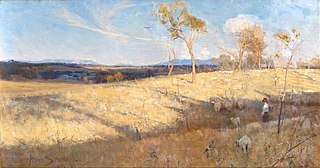
The Heidelberg School was an Australian art movement of the late 19th century. It has been described as Australian impressionism.
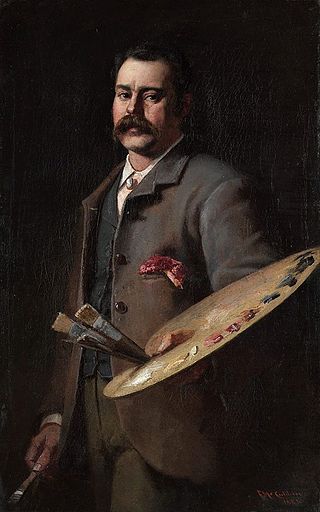
Frederick McCubbin was an Australian artist, art teacher and prominent member of the Heidelberg School art movement, also known as Australian impressionism.

Arthur Merric Bloomfield Boyd was a leading Australian painter of the middle to late 20th century. Boyd's work ranges from impressionist renderings of Australian landscape to starkly expressionist figuration, and many canvases feature both. Several famous works set Biblical stories against the Australian landscape, such as The Expulsion (1947–48), now at the Art Gallery of New South Wales. Having a strong social conscience, Boyd's work deals with humanitarian issues and universal themes of love, loss and shame.

Frederick Ronald Williams OBE was an Australian painter and printmaker. He was one of Australia’s most important artists, and one of the twentieth century's major landscapists. He had more than seventy solo exhibitions during his career in Australian galleries, as well as the exhibition Fred Williams - Landscapes of a Continent at the Museum of Modern Art in New York in 1977.

John Glover was an English-born artist. In later life he migrated to Van Diemen’s Land and became a pastoralist during the early colonial period. He has been dubbed "the father of Australian landscape painting."
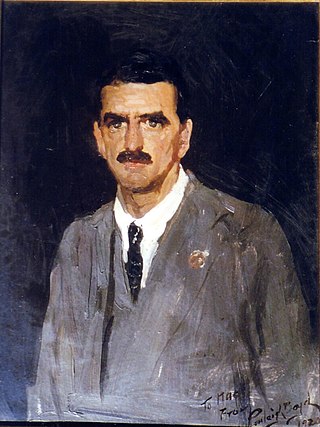
Theodore Penleigh Boyd was a British born Australian artist.
Lloyd Frederic Rees was an Australian landscape painter who twice won the Wynne Prize for his landscape paintings.

Emanuel Phillips Fox was an Australian impressionist painter. After studying at the National Gallery of Victoria Art School in Melbourne, Fox travelled to Paris to study in 1886. He remained in Europe until 1892, when he returned to Melbourne and led what is considered the second phase of the Heidelberg School, an impressionist art movement which had grown in the city during his absence. He spent over a decade in Europe in the early 20th century before finally settling in Melbourne, where he died.

Johann Joseph Eugene von Guérard was an Austrian-born artist, active in Australia from 1852 until 1882. Known for his finely detailed landscapes in the tradition of the Düsseldorf school of painting, he is represented in Australia's major public galleries, and is referred to in the country as Eugene von Guerard.
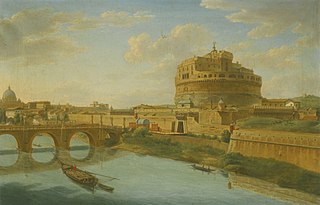
A veduta is a highly detailed, usually large-scale painting or, more often, print of a cityscape or some other vista. The painters of vedute are referred to as vedutisti.
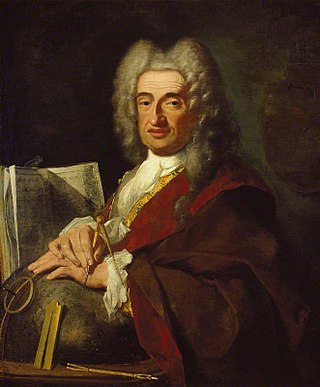
Luca Carlevarijs or Carlevaris was an Italian painter and engraver working mainly in Venice. He pioneered the genre of the cityscapes (vedute) of Venice, a genre that was later widely followed by artists such as Canaletto and Francesco Guardi.
James Vandeleur Wigley (1917–1999) is an Australian painter known for his sensitive depictions of aboriginal camp scenes and desert landscapes.

Hendrik van Minderhout was a Dutch-born artist who was primarily active in the Flemish cities Bruges and Antwerp. He painted marine paintings, harbor scenes, cityscapes, landscapes and architectural paintings. He also collaborated as a staffage painter with Flemish landscape and perspective painters.
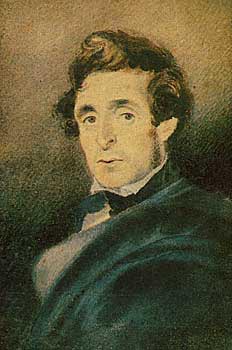
William Buelow Gould was an English and Van Diemonian (Tasmanian) painter. He was transported to Australia as a convict in 1827, after which he would become one of the most important early artists in the colony, despite never really separating himself from his life of crime.
James Doolin was an American painter and muralist best known for his saturated natural and urban southern California landscapes. Los Angeles artist and writer Doug Harvey notes that his paintings allow us "to see the places we overlook every day and to recognize that, in spite of its ominous industrial overtones, the city is shot through with a luminous, electric vitality and a psychological potency verging on the mythic." Described as a "master of color and composition," his "evocative, moody paintings teemed with life."
The Glover Prize is an Australian annual art prize awarded for paintings of the landscape of Tasmania The prize was inaugurated in 2004 by the John Glover Society, based in Evandale, Tasmania, in honour of the work of British-born landscape painter John Glover, who lived and painted in the area from 1832 until his death in 1849. The current prize amount of A$ 50,000 is the highest for landscape painting in Australia. The 2012 award was controversial: the winning picture included a depiction of convicted Port Arthur massacre spree killer Martin Bryant in the landscape of Port Arthur.

Jan Michiel Ruyten or Jan Ruyten was a Belgian Romantic painter, draughtsman and engraver known for his genre paintings, cityscapes, landscapes with figures and history paintings. He was influenced by Dutch Romantic painting.
Victor Zelman (1877–1960) was an Australian painter and etcher. He was born in Melbourne and was the son of Alberto Zelman (senior) and the brother of Alberto Zelman, the founder of the Melbourne Symphony Orchestra.

Andreas Martin or Andreas Marten was a Flemish painter and draughtsman. He is known for his imaginary landscape paintings, topographical landscapes, cityscapes of Brussels and its environs and rural genre scenes. He lived and worked in Brussels.
References
- ↑ Simison, Robert, 'Ford debut ad at same time globally', The Wall Street Journal, 27 October 1999, B10.
- ↑ Elliot, Stuart, 'Ford Goes Global in Effort to Control the Clock', The New York Times, 27 October 1999, 13–14.
- ↑ BBC GMR Drivetime, 2 November 1999, 18:00, World's biggest advertisement, presenter Tony Barnes.
- ↑ Hodgkinson, Will, 'So, what did you learn at school today?', The Guardian UK Sunday 19 April 2009. Retrieved 1 September 2014.
- ↑ Pethick, Emily, 'Degree Zero'. Frieze magazine, Issue 101, September 2006.
- ↑ Bracewell, Michael, 2007, Re-make/Re-model – Art, Pop, Fashion and the making of Roxy Music, 1953–1972, Faber & Faber, 195–208, ISBN 978-0571229857
- ↑ Yellow Submarine (1968), Full Cast & Crew, imdb.com. Retrieved 1 December 2014.
- ↑ Sloan, Kate, 2018, Art, Cybernetics and Pedagogy in Post-War Britain, Roy Ascott's Groundcourse, Routledge, page 153
- ↑ Weinstein, Josh, 'How the Beatles' Yellow Submarine gave rise to modern animation', The Guardian online, Monday 19 November 2012. Retrieved 1 September 2014.
- ↑ Cohen, Karl, 'The Beatles' Yellow Submarine Turns 30: John Coates and Norman Kauffman Look Back' Animation World, Issue 3,4, July 1998. Retrieved 3 September 2014.
- ↑ Weinstein, Josh, 'As great as any Picasso', The Guardian UK, 20 November 2012, 19.
- ↑ Adforum – Ford – Just Wave Hello / Global Anthem – JWT Detroit. Retrieved 8 February 2015.
- ↑ Elliot, Stuart, 'Ford Goes Global in Effort to Control the Clock', The New York Times, 27 October 1999, 13–14.
- ↑ 'Ford hailed by Guinness with first ad to cover the globe', Brandweek, 24 July 2000.
- ↑ 'Vantage Point', by Meg Williams, Docklands News, 29 May 2019.
- ↑ 'Powell at Gasworks', Emerald Hill Weekly, 2–8 April 2008, 14.
- ↑ 'Stories of the earth', Emerald Hill Weekly, 23–29 April 2008, 13
- ↑ Contamination: an artistic response to a contaminated landscape and its planned remediation by Gasworks' resident visual artists, Gasworks Arts Park, 2007. Worldcat online library catalogue. Retrieved 8 February 2015.
- ↑ Interview with Ted Powell on Smart Arts, Triple R radio, 17 September 2007.
- ↑ 'Something to fauna over', Emerald Hill Weekly, 6 May 2009.
- ↑ Sinclair, Jenny, 'Sorrowful Crossing', The Age, 9 October 2010. Retrieved 8 February 2015.
- ↑ 'A dull bridge comes to light', Port Phillip Leader, 1 May 2010, 11.
- ↑ 'Rivers of light', The Age, 5 May 2010, 20.
- ↑ 'Westgate bridge comes to light', Leader News, 14 May 2010.
- ↑ Port Phillip Leader, 3 April 2012, 17 and 10 April 2012, 21.
- ↑ Tame, Adrian, 'Melbourne to reign as Australia's biggest city by 2035', Sunday Herald Sun, 26 December 2010.
- ↑ Recent Acquisitions, catalogue of an exhibition of recent Port Phillip City acquisitions, 2010–2011] held at the City of Port Phillip Town Hall, 30 November – 29 December St Kilda.
- ↑ 'Ted, Powell', City of Port Phillip art database [ permanent dead link ] Retrieved 1 September 2014.
- ↑ Williamstown, July 2012
- ↑ Voyager of the Seas and Beacon Cove
- ↑ Melbourne South Bank
- ↑ City of Melbourne Collection
- ↑ 'Artists At Work Gasworks' 30 mins, 'Artscape', ABC1, 10:00 pm Tuesday, 19 August 2008. Retrieved 1 September 2014.
- ↑ ART FOR LIFE: Art auction bushfire appeal. Retrieved 22 July 2014.
- ↑ 'Sell yourself for charity', Campaign Brief, October 2011. Retrieved 22 July 2014.
- ↑ 'Melbourne's advertising fraternity digs deep to raise $72,000 for the Lighthouse Foundation' Campaign Brief, December 2010. Retrieved 22 July 2014.